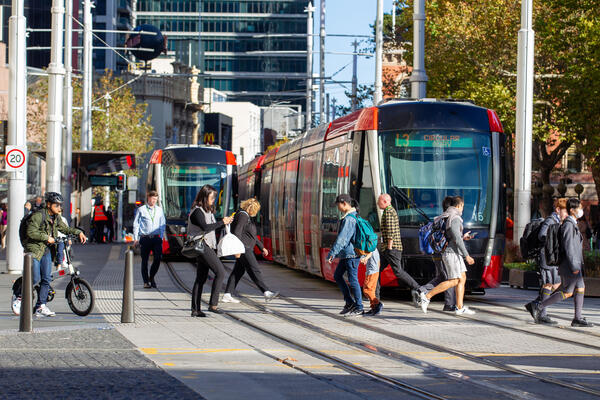
Exploring balance between movement and place in designing safe and successful places
Research designed to explore the application of the Movement and Place Framework using immersive virtual environments. The research was delivered in partnership with Swinburne University of Technology.
To support Transport for NSW (Transport) and local councils in delivering high-quality successful places, Transport partnered with Swinburne University of Technology on this research. The research was designed to understand how immersive virtual environments could be used to assess pedestrians’ perceptions of safety and place. Immersive virtual environments generally use virtual reality to simulate an experience. It assessed the impact of urban design elements and safety treatments such as wombat crossings and increasing tree canopy. The safety of streets and roads is an important aspect of successful places. In the long term, it’s hoped the research will help contribute to the Towards Zero vision.
The final report from this research found:
- Increasing separation from moving traffic make main streets significantly less stressful. High speed and noise had the strongest negative impact on perceptions of place.
- Cycle lanes were found to outperform barrier fences in making positive contribution to perceived safety and place. The presence of cyclists brought with it a positive safety and place element, ranking high for making a street feel more pleasant.
- Increasing tree canopy coverage makes a significant positive place contribution and should be undertaken in conjunction with other safety and place treatments.
Exploring balance between movement and place in designing safe and successful places report
The report outlines the findings of this research and provides valuable insights into the impact that safety treatments, traffic factors and urban design have on pedestrian perceptions of place. It also provides evidence on the effectiveness of using immersive virtual environments for eliciting community perceptions.
This research was delivered in partnership with iMOVE CRC and supported by the Cooperative Research Centres program, an Australian Government initiative.
